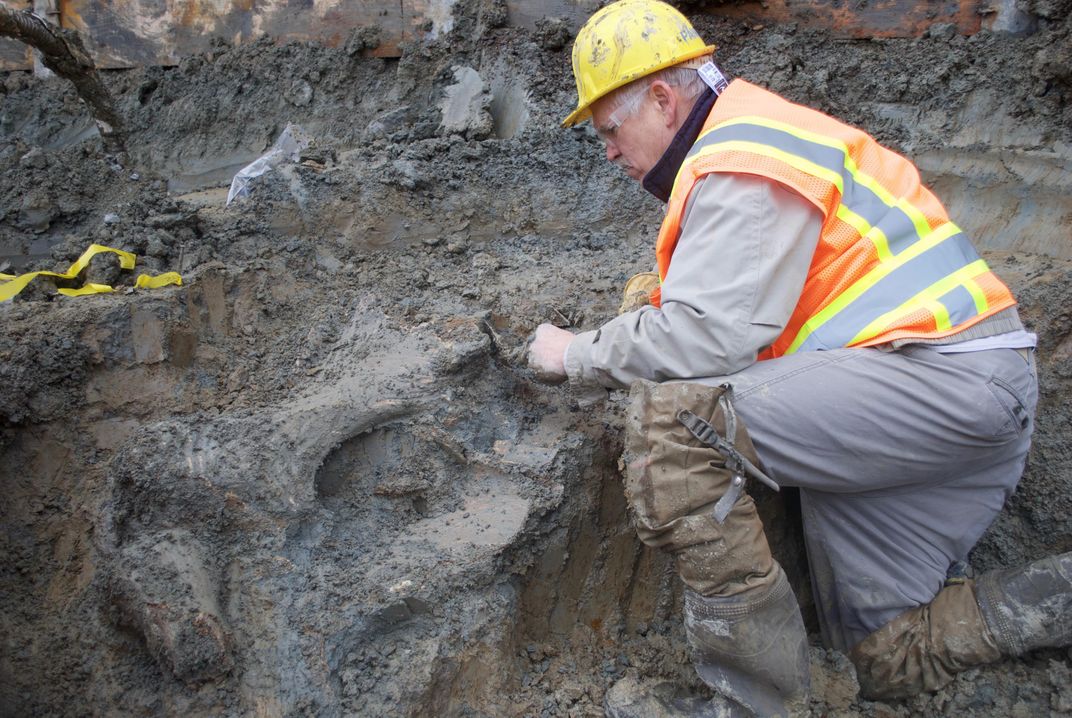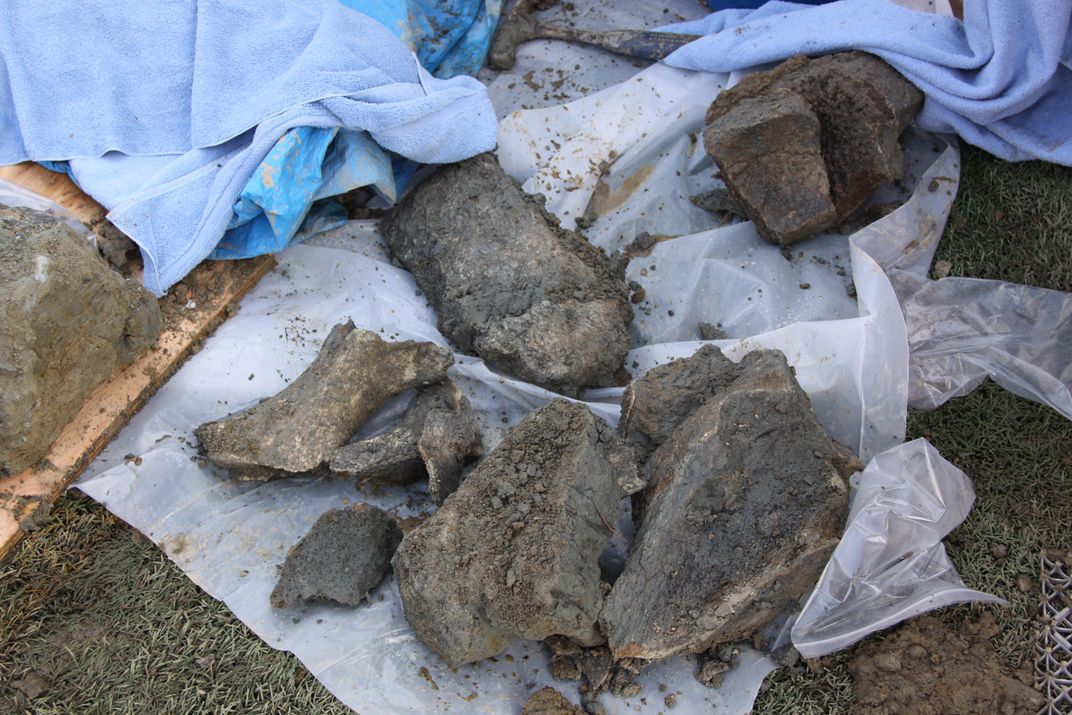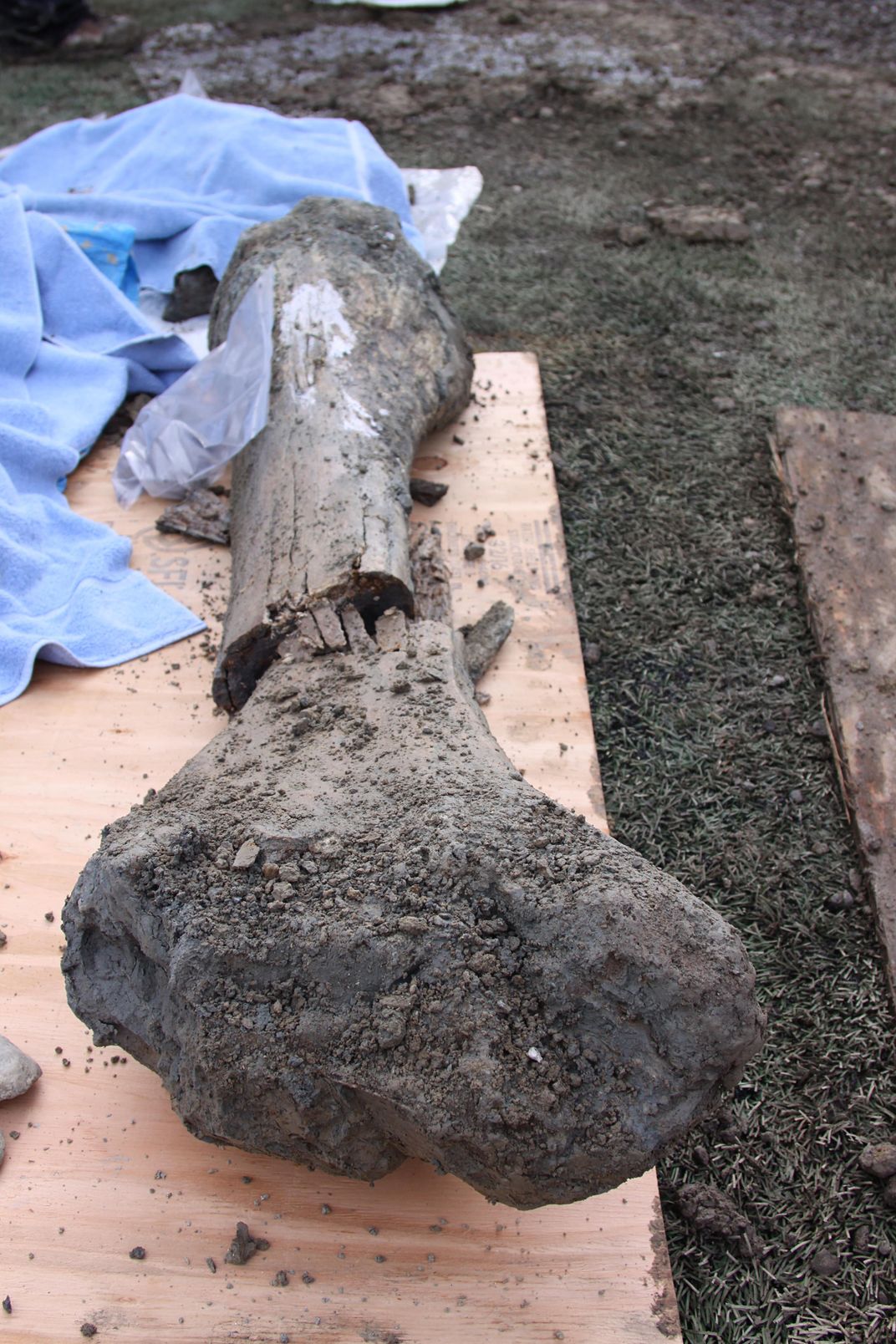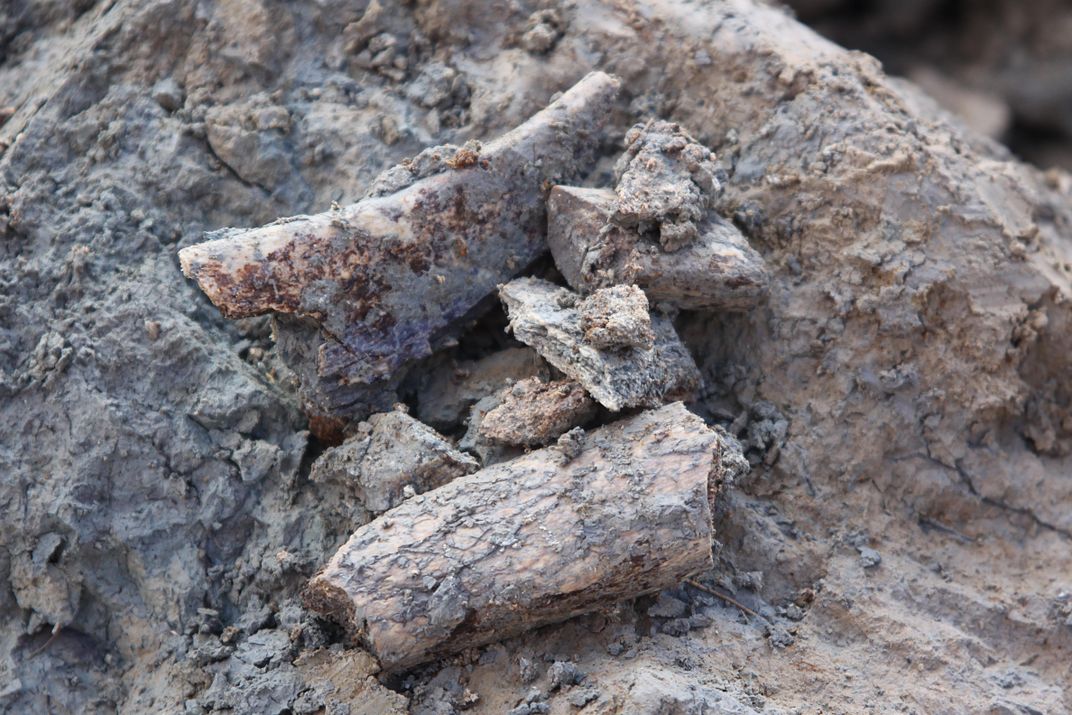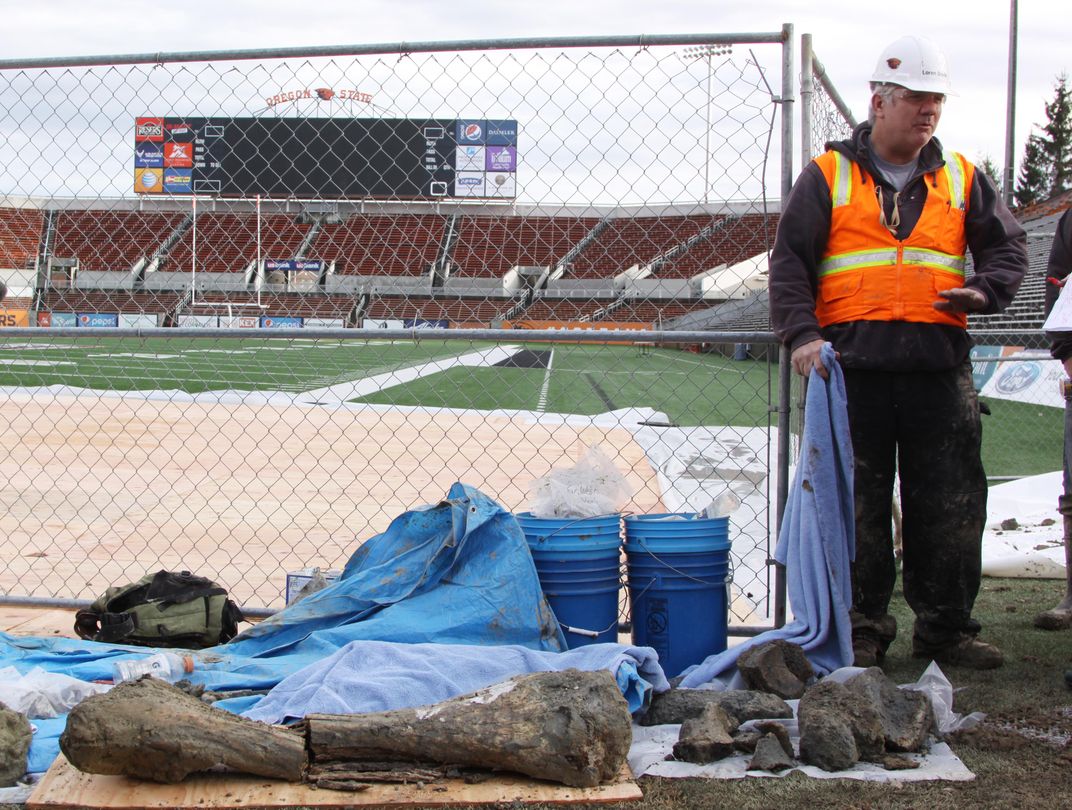Construction Crews Discover Mammoth Bones Beneath an Oregon Football Stadium
10,000-year-old bones were hiding just ten feet beneath the endzone
/https://tf-cmsv2-smithsonianmag-media.s3.amazonaws.com/filer/e2/e4/e2e48376-c1d0-4694-997a-c74ee72d3a4b/24635135305_b53bc3372b_o.jpg)
Construction crews digging underneath a Oregon State University football field this week discovered a trove of ancient bones beneath the end zone—including a giant femur bone that likely belonged to a wooly mammoth.
Workers were excavating the site for a future locker room as part of a plan to expand the Reser Stadium in Corvallis, Oregon. The cache of bones waited just 10 feet below the surface and when a construction worker uncovered the massive femur, all work ceased and the crew immediately notified OSU officials. In the days since, archaeologists discovered bones that belonged to ancient bison and camels alongside the mammoth remains, Joseph Rose reports for The Oregonian.
“There are quite a few bones, and dozens of pieces,” Loren Davis, an associate professor of anthropology at OSU who was called to the site after the initial discovery was made, says in a statement. "Some of the bones are not in very good shape, but some are actually quite well preserved."
The bones are believed to be about 10,000 years old, though more testing needs to be done before experts can be certain. While OSU officials had no idea what was lying underneath the football stadium, it’s not uncommon for people to come across ancient animal remains throughout the Willamette Valley, which was once a popular trail for wooly mammoth herds, Rose writes.
Archaeologists aren’t sure how the ice age mammals passed, but it’s possible that they traveled to an ancient bog to die, Davis says in a statement.
“Animals who were sick would often go to a body of water and die there, so it’s not unusual to find a group of bones like this,” Davis said. “We had all of these types of animals in the Willamette Valley back then.”
Archaeologists examining the site haven’t found any human bones or remains, which could suggest that the animals weren’t killed during a human hunt. However, this also means that under Oregon state law, the find is not protected as an archaeological site and construction is likely to continue on schedule, Bryan Altman reports for CBS Seattle. For now, workers have moved on to a different step of the stadium’s renovation, but aim to have the project completed by the start of the 2016 football season.
The find may not be stopping construction, but the university is treating the site as a paleontological find and has closed it off to the public, Sarah Berger reports for International Business Times. Meanwhile, Davis and his team are continuing to excavate the site, hoping to learn more about the ancient ecosystem of the Willamette Valley in the process.
"It just goes to show there's a whole world of the past that exists underground," Davis tells Rose. "It's so neat we could find it here at Reser Stadium. As you're watching a football game, you can think, beneath your feet, lie the bodies of extinct animals that relate to the past."
